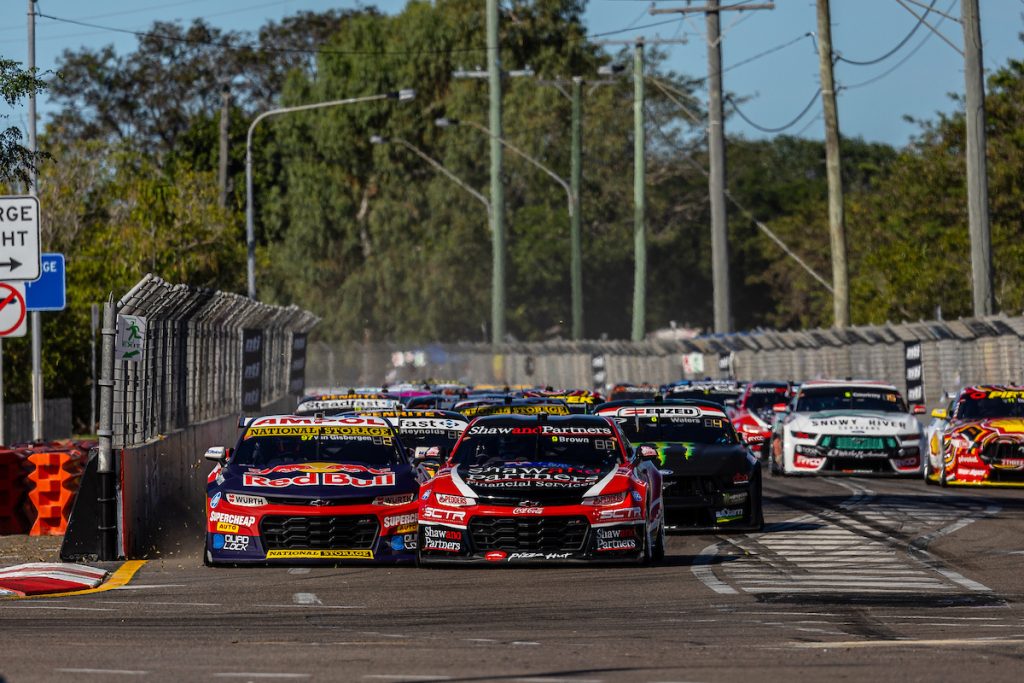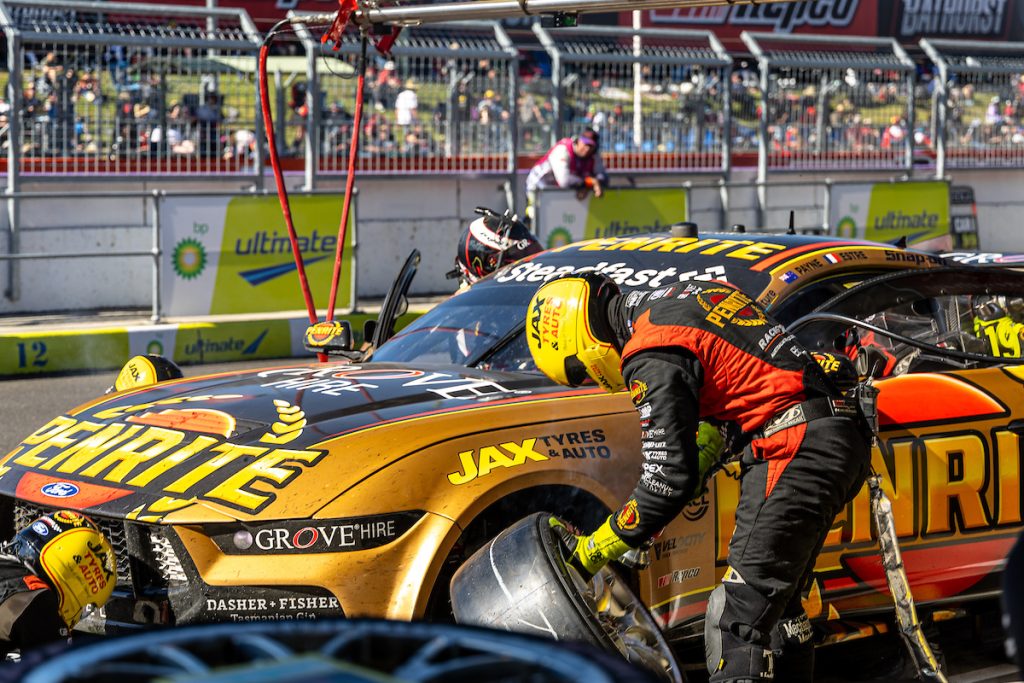
As we roll into 2024, I’m as concerned as ever about some big-ticket issues surrounding Supercars, especially with broadcast rights to consider in the near future. Matters such as the shape of the calendar and the paucity of events can, and will, affect the popularity and visibility of the category at an increasingly critical juncture.
However, on the basis that we’ve-got-what-we’ve-got for 2024, how can Supercars management at least be proactive in other areas? Here’s eight ideas:
1. Rather than the constant referral in the Supercars world to the ‘P’ word, please can we go into 2024 with only the ‘T’ word? Yes, T for Transparency. Tell everyone the facts around any aero and/or engine parity issues, rather than the 2023 head-in-the-clouds, pretend-it-doesn’t-exist, approach. Supercars can, and should, ensure that the hard facts emerge from them and them alone. Manufacturers should never be allowed to run the agenda in a motorsports category, and both GM and Ford have been guilty of trying to do exactly that at different points over the last two decades and more. Hopefully, T will overcome P and we can get on with racing.
2. It may seem contrary to the paragraph above, but Supercars themselves need to stop trying to control every aspect of the media, both broadcast and elsewhere. The point is that they didn’t do what they could to control the P narrative last year by rolling out all the facts, but they did do their best to shut down any dissent on almost any other topic where they could. Opposing views need to be allowed and different opinions permitted to be aired, especially those of the drivers; the stars. The broadcast, in particular, is now so nauseatingly compliant that it’s embarrassing. Imagine watching a Test Match with no-one on the commentary team being allowed to be critical of anything. Boring! With only one truly independent website reporting on the category now, Supercars is becoming so ‘vanilla’ to the casual spectator/viewer that it’s increasingly dropping off their radar.
3. Get the quality of the television broadcast back to being cutting edge, as it used to be. The devil is in the detail and the media producers need to watch other motorsports productions from around the world all the time to see how they’re evolving. The Supercars totem pole, for instance, is appallingly bad compared with MotoGP or F1; way too big and clumsy with the wrong details on it. The lack of the regular use of picture in picture on a regular basis so that live action isn’t missed is very evident. And the need to replay every angle of every incident is plain boring. We don’t need to see that Johnny punted Billy six times over, especially at the expense of live action. If the Driving Standards Advisor needs to, then he can do that privately. Meanwhile, whoever came up with the new Supercars website and app and launched it, major glitches and all, just in time for the biggest race of the year, has hopefully walked the plank. Keep them simple and informative in 2024 please.
4. Lower the minimum tyre pressure for the 2024 season. I’ve said it before, if 17psi was the ‘safe’ minimum for the old, heavier, car with considerably more downforce, then 15psi, for instance, would be acceptable for Gen3. That would have the effect of more regularly keeping the tyre in the right hot pressure operating window (rather than over-inflated), which would mean that drivers do more racing and less tyre management. Everyone with experience in the business knows this, and yet certain vested interests appear to hold sway… Fingers crossed for common sense to prevail.

5. Immediately start a 2025 tyre testing programme. If there isn’t a new tyre (Dunlop/Goodyear or whatever) for 2025, then you’ve got to wonder whether there’s anyone sensible left in the building. The Dunlop brand is under a shadow in Australia, given that its owner, Goodyear, has put the name up for sale here. Meanwhile, Goodyear is now the exclusive supplier of rubber for the LMGT3 category in the World Endurance Championship with a brand-new tyre. This is a tyre that may well be perfect (or a derivative of it) for Supercars, and has been developed with the aim of being able to do at least two hours of flat out racing per set. Tyre numbers could be vastly reduced with consequential savings in wheels/pressure sensors and labour costs. A new tyre that isn’t as sensitive to surface temperature issues as the current one will help the racing. It won’t eliminate tyre conservation racing completely as there’ll still be some very high-degradation circuits, but it shouldn’t be every weekend. Exactly like a fuel conservation race is interesting every so often, tyre conservation can be as well, but not every week. This is one for Tim Edwards to pick up and run with like a dog with a bone.
6. Start testing a limited slip differential in the Gen3 cars with the aim of a 2025 introduction. A very simple plate diff, with fixed ramp angles and plate stack, could easily be fitted within the existing transaxle. Make the pre-load externally adjustable so that teams and drivers can better tune the cars to their liking. This is a cheap and simple way to give more adjustability to the pit lane when there’s a severe danger of the lack of chassis differences leading to ever more processional racing. With every car now having identical suspension componentry, creating a simple and cost-effective way of creating set-up differences will pay dividends in multi-line racing.
7. Get rid of rules around refueling in the non-sprint races. There are rules that were put in place over the years that are no longer relevant. Minimum drops are now unnecessary if, as we’re told, the fuel economy of both brands of car is near identical. Take a 250km race, for instance. Limit the fuel tank size to 100 litres (or less) and let everyone get on with it. No other rules. Stop for whatever tyres and fuel you decide. Keep us guessing, rather than having commentators telling us what’s going to happen all the time. Where’s the jeopardy? Plus, watching cars sit in pit lane for anything up to a minute being refueled to meet the minimum drop requirements is more akin to sportscar racing rather than Supercars. That’s fine for them, but not for Supercars.
8. Supercars itself needs to take the lead in promoting the drivers, especially the younger ones. The visibility of any of the drivers amongst the wider public is shockingly bad. If Supercars makes it a priority, then the teams and their sponsors also need to get onboard. But the drivers need to be allowed to speak their minds without fear of recourse from the powers that be. Plus, why does everyone need to pretend to be friends? We need rivalries. And, right now, there’s a great example, over the off-season, of the lack of understanding by Supercars of the problem; just look at the Instagram feeds for MotoGP and, even more so, F1. Riders and drivers feature time after time, in contrast to the Supercars one. All this proves to me that the powers-that-be at Supercars live in a bubble without real awareness of the rest of the sport. Start taking some pages out of other books immediately as we head towards the 2024 season and promote the drivers!
If there’s one standout from all the above, it should be that the drivers are the stars, not the team owners, engineers, et cetera, and nor the commentators. Promote the drivers, and let them speak without fear or favour, and some headway may be made into re-establishing the popularity of potatoes… sorry, Supercars.
This article was originally published by a speedcafe.com . Read the Original article here. .

